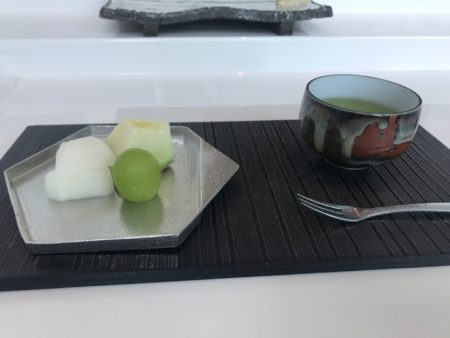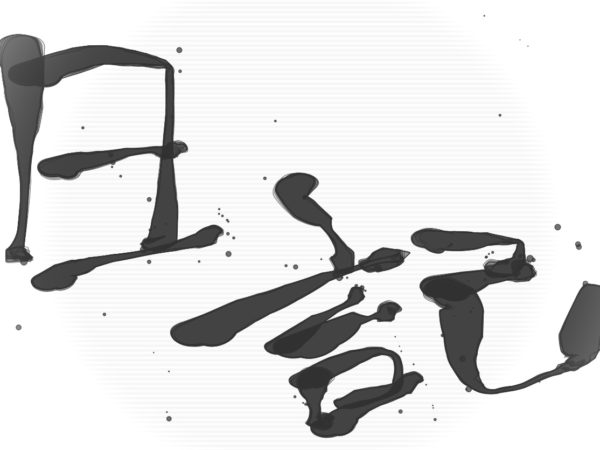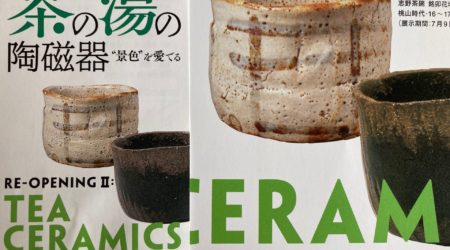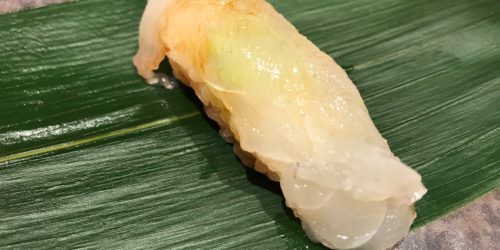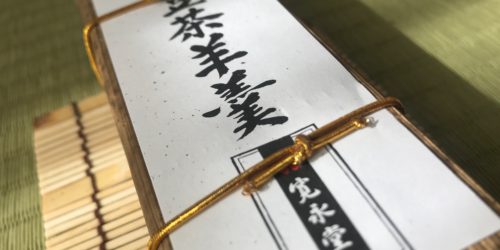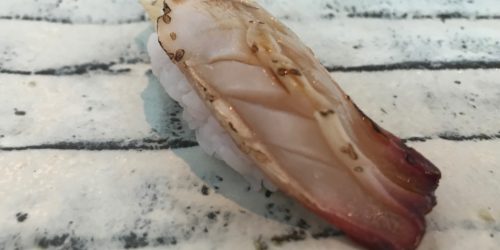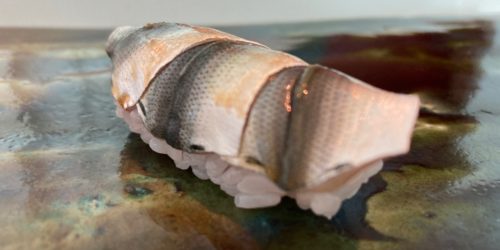The beautiful sushi of September, 2020
It is late September now.
Tokyo has finally become cooler too.
I went to a Japanese restaurant, “Kazahana”, to eat authentic sushi.
I make it a rule to go and eat authentic sushi by myself.
This is because, when there is some beautiful sushi in front of me, I want to concentrate on it without worrying about other companions.
This restaurant has the exclusive counter seats for sushi.
I come face-to-face with the sushi chef while I eat. So I can ask the sushi chef about their artistic sushi.
I’ll introduce you to this authentic, beautiful sushi.
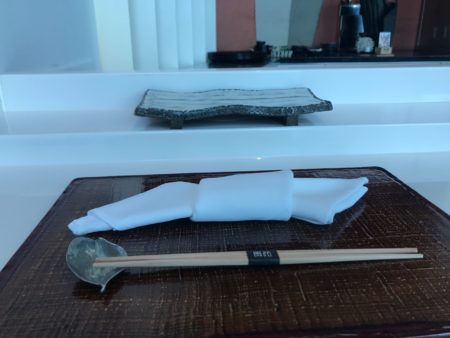
There were three kinds of appetizers available.
They were a starchy thick sauce with Yuba(tofu skin), a vinegared Mozuku seaweed with boiled octopus, and an assortment of Sashimi(black seabass and bonito).
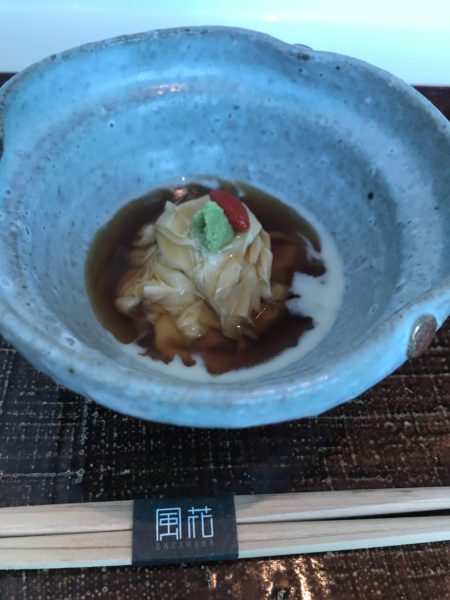
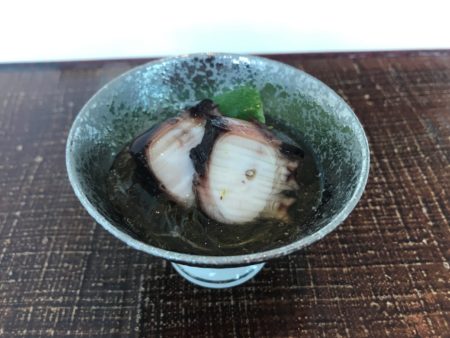
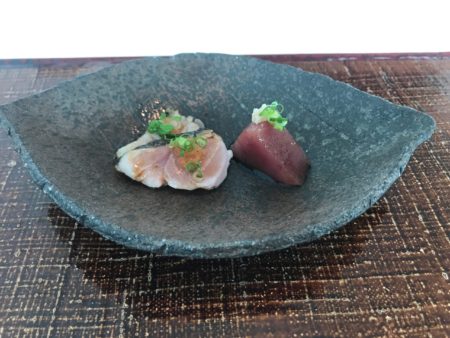
After I finished eating the appetizers, a sushi chef started to make sushi.
I’ll introduce sushi in the order of eating.
The first sushi was Yagara(cornetfish).
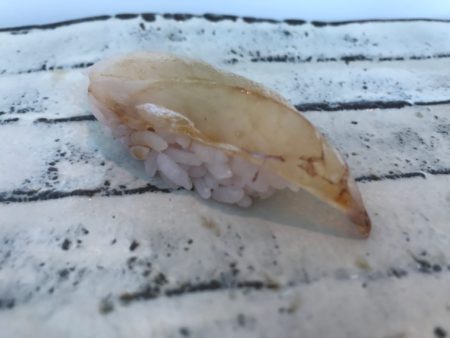
The sushi chef purchases fresh fish at Toyosu Market every morning.
The fish that is purchased varies from day to day. And all of the fish served at this restaurant have been carefully selected by the chef.
Among them, Yagara is a rare, high-quality fish. I was in luck.
Yagara has a very mild flavor.
It really goes well with vinegared rice.
In most cases, white vinegar is used for the vinegared rice that is used for sushi.
Howerer, this restaurant uses red vinegar for its vinegared rice.
So their vinegared rice has a reddish undertone.
That is clear at a glance.
Its acidity is milder than white vinegar.
Reddish, vinegared rice is one of the characteristics of traditional Edo-style(Old Tokyo-style) sushi.
It is not widely known among Japanese people.
The second sushi was Kisu(sand borer).
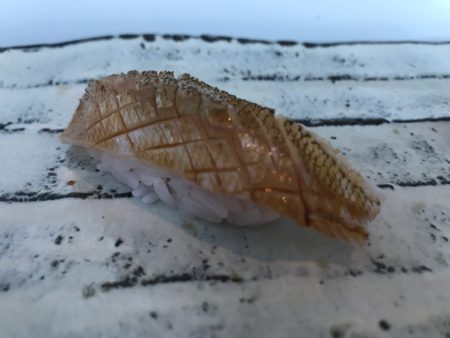
It was lightly seasoned and delicious.
An ao-jiso leaf was laid under the Kisu, and it provided a waft of freshness in my mouth.
The third sushi was Sanma(saury).
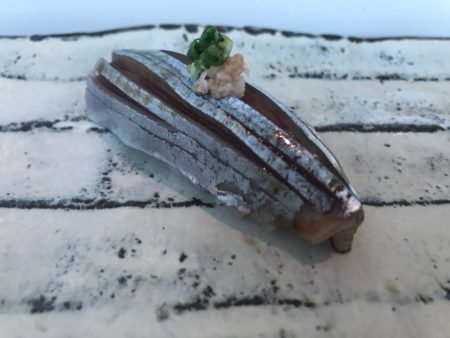
A small amount of grated ginger was on top of it.
During Autumn, Sanma has a lot of fat.
So it tasted very good.
The fourth sushi was Ishigaki-gai(a kind of shellfish).
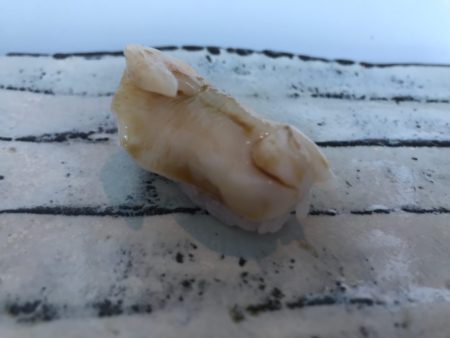
Its taste similar to a cockle.
It was chewy and delicious.
The fifth sushi was Ikura(salmon roe).
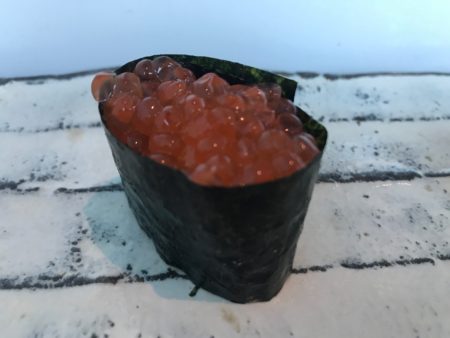
Autumn is the best time to eat Ikura.
From September through November is the spawning season, so I was able to eat fresh Ikura.
The sixth sushi was Cyu-toro(medium fatty tuna).
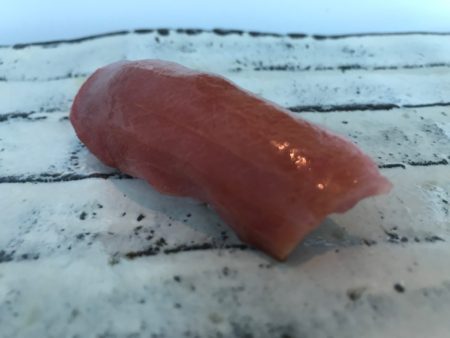
Japanese people like it very much, and I’m no exception.
The fatty tuna was thick, and the texture was nice and very soft. It was amazing.
The seventh sushi was Managatsuo(butter fish).
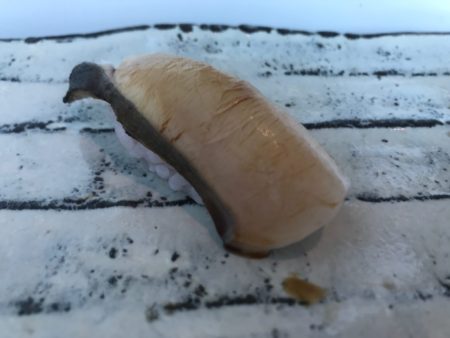
This delicious fish is famous for being a high-class fish. I’ve never seen it at the supermarket.
The eighth sushi was Anago(conger eel).
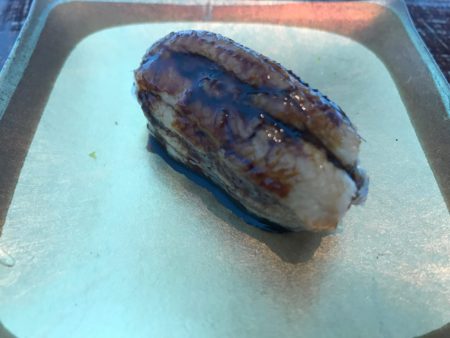
Anago is the most representative of all Edo-style sushi. Anago was loved by people in the Edo period.
Its taste is similar to Unagi(eel).
The chef spends hours prepping for Anago. I ate it with appreciation.
The ninth sushi was Kanpyo(a sushi roll of dried gourd shavings).
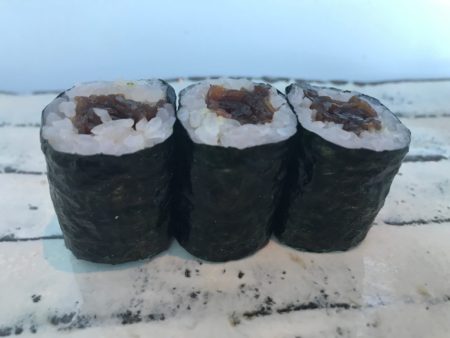
Typically, dried gourd shavings are seasoned to be sweet and salty.
This is representative of Edo-style sushi.
Though Kanpyo is relatively cheap for sushi, it is delicious.
After I finished eating sushi, Tomewan(miso soup) was served.
Finally, I ate some fruit with sencya tea.
I really enjoyed the authentic, beautiful sushi.
I’d love to go again by the end of October.
